The Knog Blinder 120 and Knog Blinder 80 StVZO bike lights on test – Style over substance?
Have you been caught off guard by daylight saving time again and suddenly realised that it’s getting dark earlier? Then it’s high time to make sure your bike has the right lighting. With the StVZO approved Blinder 120 and 80 bike lights, Knog aim to provide the perfect legal lighting solution for riding on German roads. We ventured out into the dark and put these headlights to the test.
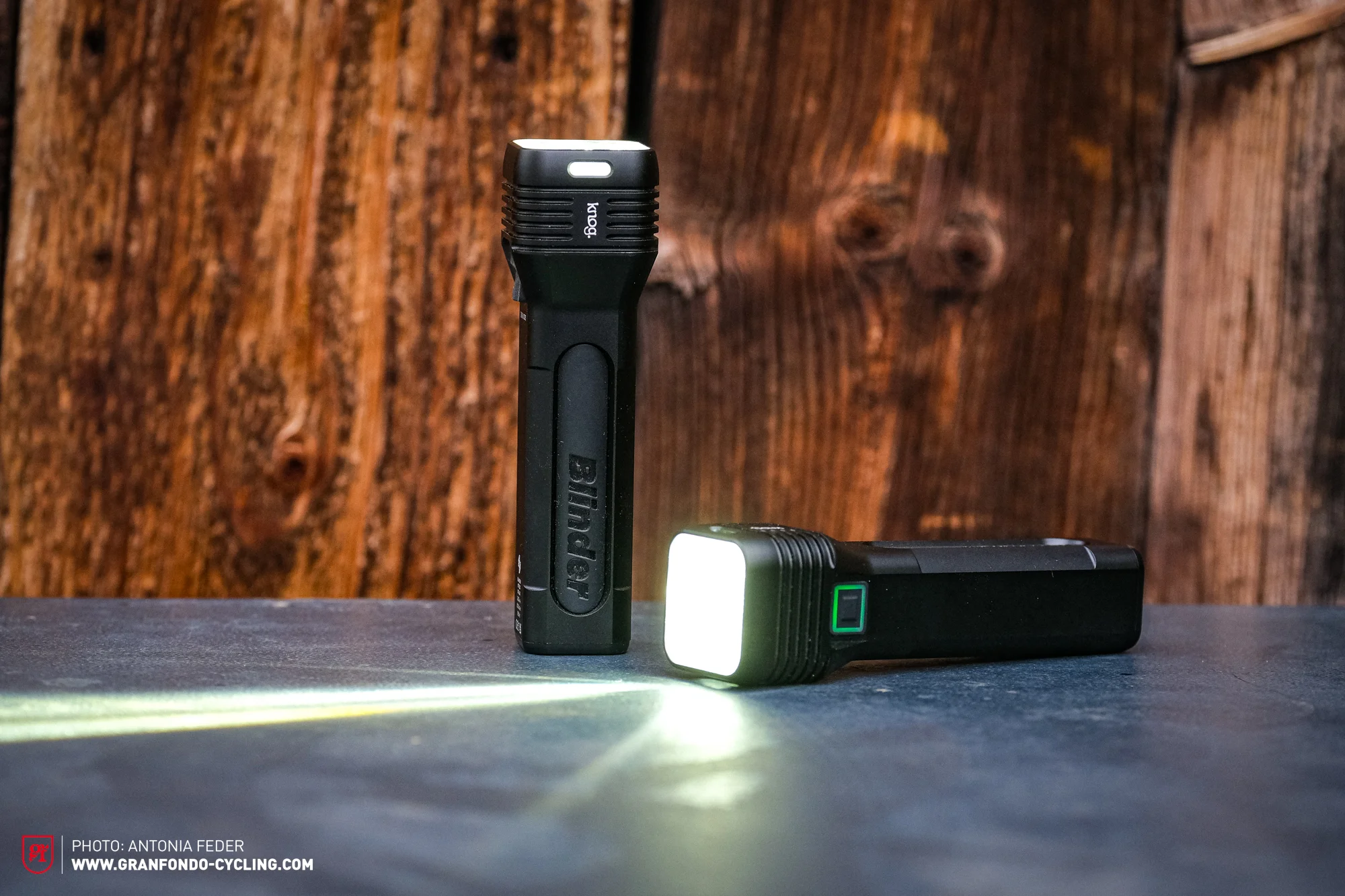
Knog are an Australian bike and outdoor accessories brand who have made a name for themselves in the bike scene with their stylish lights and the Knog Oi bell. The Blinder lights are a well-known product range in the Knog portfolio. However, the previous Blinder bike lights didn’t quite comply with German road regulations called StVZO. In response, Knog have introduced two new StVZO approved Blinder models: the brighter Blinder 120 StVZO light, priced at € 100, and the less intense Blinder 80 StVZO light, priced at € 80. Apart from the difference in brightness between the Blinder 120 and Blinder 80, the construction of both lights is identical. We have tested these new Knog lights to see if they just look good or if they really let you see and be seen.
The new road legal Blinders STVZO come in an ecological cardboard box, without charger and charging cable for the built-in USB-C port. There’s no unnecessary plastic, including on the stylish light housing. The entire housing is made from a single piece of 6061 aluminium that has been CNC machined. At the rear of the light is a plastic cover that is firmly attached to the housing, and cannot be opened. This means that the 5,000 mAh/18.5 Wh LiPo battery is permanently installed and you can’t replace it. Once the battery has reached the end of its life, the bike light is no longer usable. The light is fully dustproof, and waterproof, certified to IP67 standards. With a length of 125 mm and a width of 36 mm at the square head, and 26 mm at the handle, it sits comfortably in your hand. The material gives it a solid and high-quality appearance. This is also reflected in the somewhat high weight. The Blinder 120 weighs 185 g and the Blinder 80 weighs 183 g. Small cooling fins have been milled into the metal of the light head to help cool the powerful LED during operation. The road legal Blinders StVZO use only one LED, and the light from the diode is focused and diffused by a polycarbonate lens. Two small cut-outs to the left and right of the light head extend the lens to the sides for improved side visibility. A single button rests on the top of the light, while the USB-C charging port is hidden under a silicone plug on the underside.
Notably, the body of the light has recesses on either side that double as rails for the handlebar mount. Behind these recesses, the silicone cover encloses the battery and provides a better grip when the Blinder is used as a handheld torch.
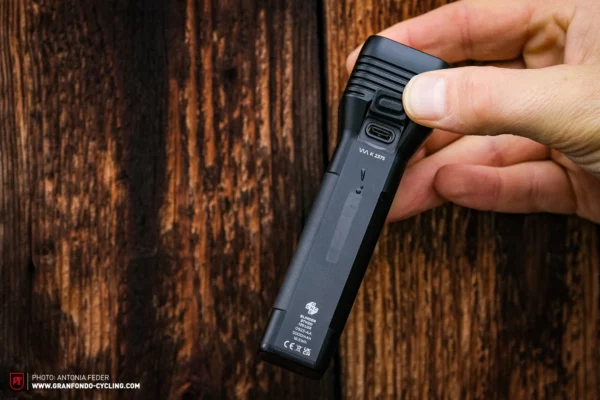
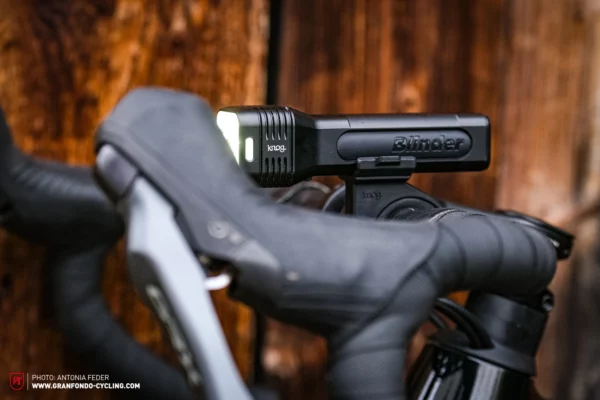
Installing the Knog Blinder StVZO is a straightforward process. The package includes a handlebar clamp, Allen key and two pairs of rubber ring adapters, giving you the flexibility to attach the mount to a 31.8 mm or 35 mm diameter handlebar. The plastic mount clips easily into the housing on both sides, making it a hassle-free task. However, road bikers with unique handlebar geometries or aero cockpits may find the round clamp supplied unsuitable. For such cases, Knog offer the elastic Blinder Bar Mount, priced at € 9.95, which is designed to fit diameters from 22.2 mm to 35 mm, and can be installed without tools. For riders using exceptionally flat aero bars, there’s the Blinder GoPro mount, also available for € 9.95. Using a compatible GoPro adapter, you can attach the light from below to a bike computer mount or use it as a helmet light. It’s important to note that there are no alternative mounting options, such as a hand strap or additional handlebar fixture, so you’re relying solely on these mounting solutions.
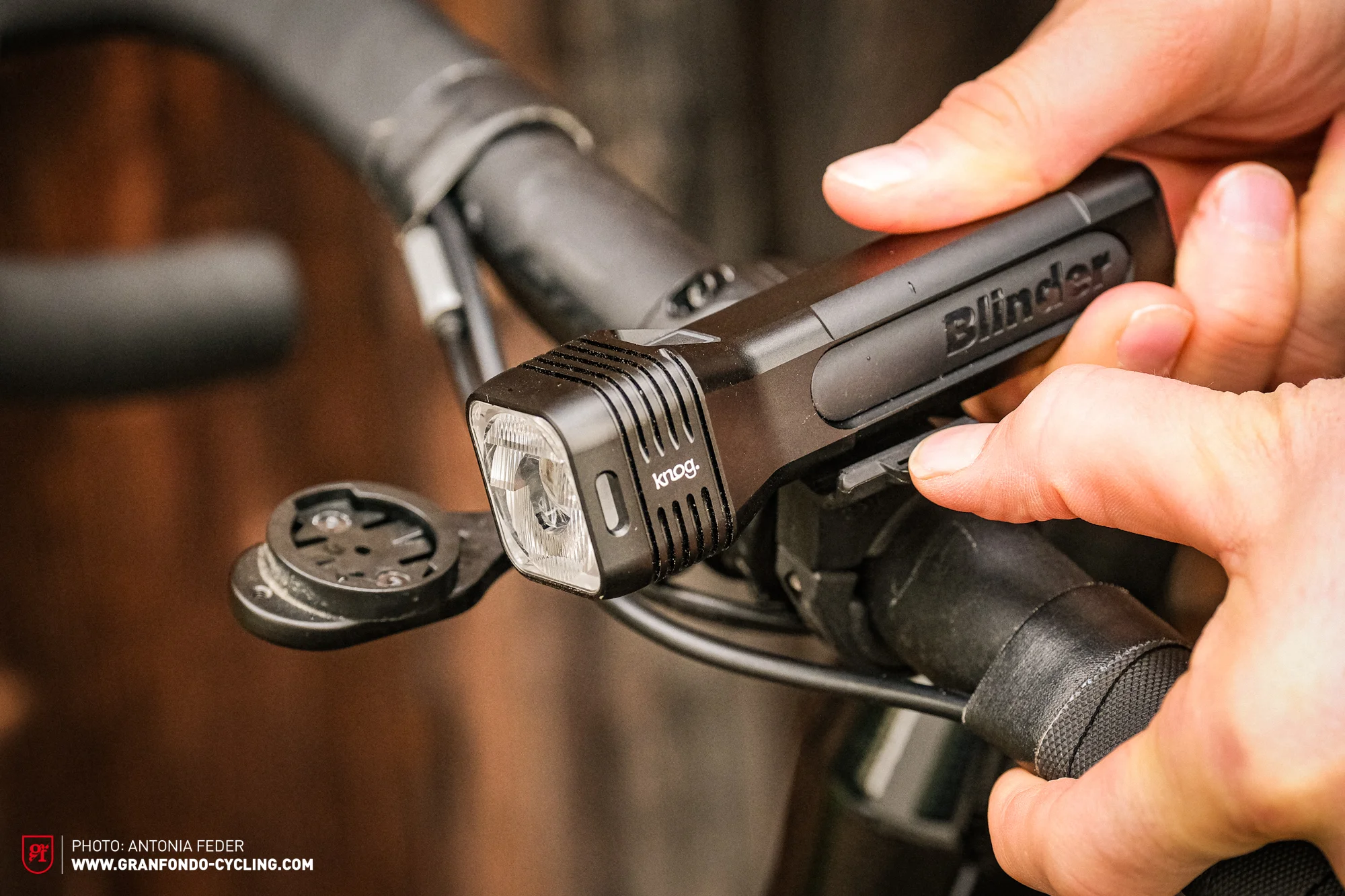
When you briefly press the soft silicone button, a coloured LED below the button flashes to indicate the charging status of the light. Green indicates a charge between 100% and 50%, yellow indicates between 50% and 10%, and red means the charge is below 10%. Press and hold the button for more than 2 seconds to turn the light on or off. When in use, the coloured LED below the button will remain lit, indicating the current charging status of the light. Press and release the button to toggle between the three modes: High, Medium, Low. We have summarised the manufacturer’s specifications for runtime and brightness in each mode in the table below. The Blinder has no other functions, such as a flashing light, but this would not be permitted in road traffic anyway.
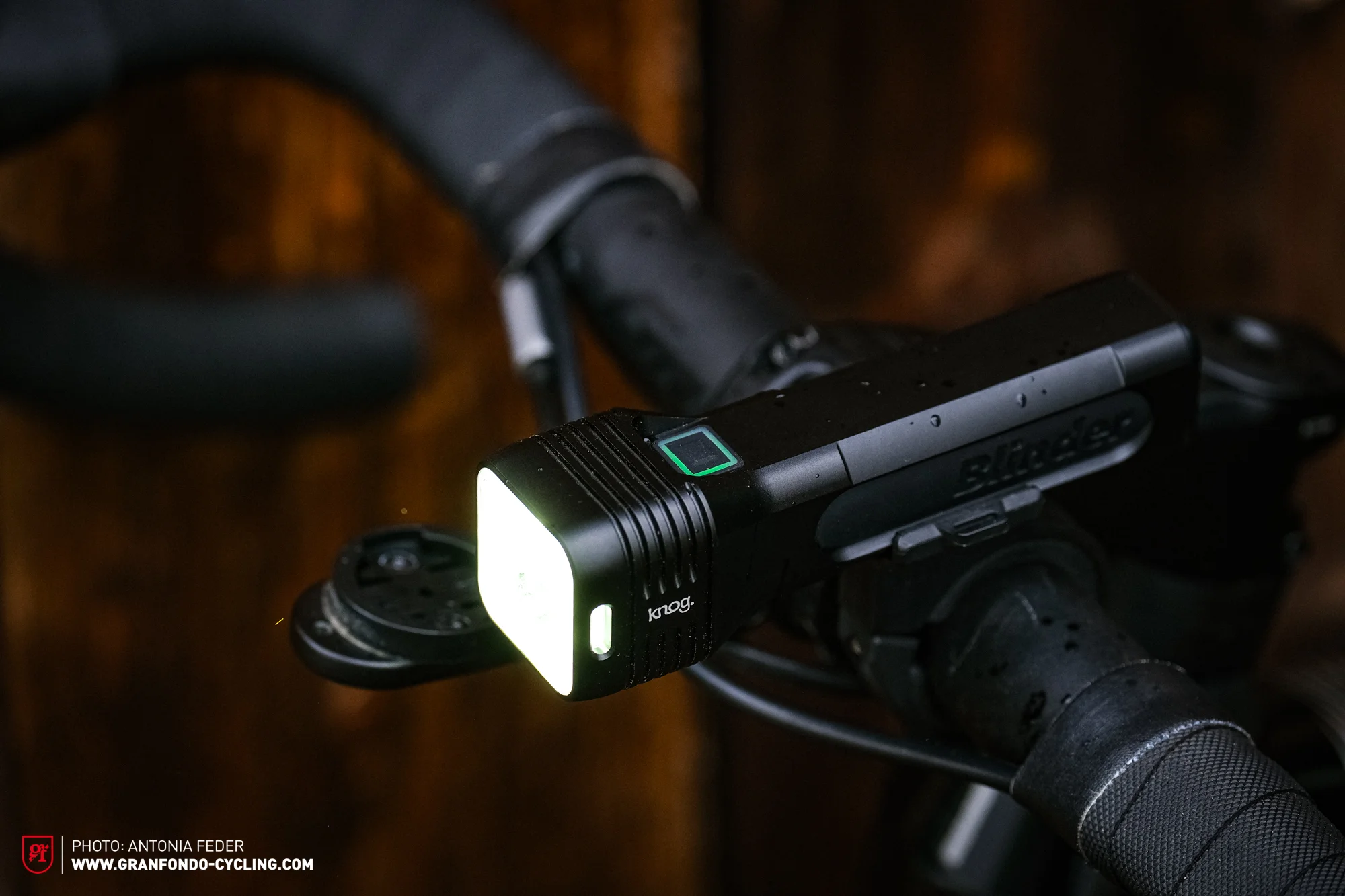
| Runtime per mode | Knog Blinder 80 StVZO | Knog Blinder 120 StVZO |
|---|---|---|
| High | 80 lux / 3.5 h | 120 lux / 2.5 h |
| Medium | 45 lux / 6.5 h | 70 lux / 4 h |
| Low | 25 lux / 12.5 h | 40 lux / 8.5 h |
Putting the new Knog Blinder 120 StVZO and Blinder 80 StVZO to the test
It takes about 5 hours to fully charge the road legal Blinders with a standard smartphone charger. There’s no way around this charging time, as the Knog Blinders cannot be charged while in use. If you plug a charging cable into the USB-C port, the light goes out. This limitation is disappointing for ebikers with USB charging ports on their bikes and for long-distance cyclists who rely on power banks to extend their lighting.
When in use, the Blinders provide a clear illumination that is partly responsible for the StVZO approval. The upper edge of the light emits a remarkably sharp cut-off, making it almost impossible to blind oncoming traffic when set correctly. At their highest mode, both the Blinder 120 and Blinder 80 produce enough light to illuminate dark forest paths. However, both road legal Blinders have a slightly uneven light pattern that can be distracting when riding at night. The lens concentrates most of the light into a rectangular and somewhat narrow beam well in front of the wheel, creating an irritating shadow, followed by a slightly weaker but wider light spot near the front wheel, and then another substantial shadow. We would prefer a more even illumination pattern because it would make it easier to see hazards such as potholes and puddles that might otherwise be hidden in the shadowed areas. As a result, you may need to reduce your speed slightly on uneven surfaces. The light pattern of the Blinder 80 StVZO is identical, but correspondingly darker. A slightly wider beam would be beneficial to see junctions earlier. The small side cut-outs, designed to improve visibility to other road users from the side, are bright but a little small and can be obscured by handlebar hoods on a road bike. The mounting mechanism has proved reliable, holding the light securely in place and withstanding the odd shake on bumpy roads. However, after our first three weeks of testing, it remains to be seen whether the soft plastic of the mount will wear out over time from contact with the sharp-edged aluminium housings.

The Blinder 120 StVZO lasted 2 hours and 10 minutes at full power, slightly short of the 2.5 hours stated by the manufacturer. Meanwhile, the Blinder 80 StVZO lasted 3 hours and 26 minutes in our test, just shy of the manufacturer’s specified 3.5 hours (tested in pleasant autumn conditions at 20°C). Given the compact size and brightness of both lights, this is a commendable performance, even if it doesn’t quite live up to the manufacturer’s claims. On the highest setting, the Blinder 80 tends to get a little warm to the touch. The Blinder 120, on the other hand, needs some airflow to prevent overheating. Using the Blinder 120 for tasks such as cleaning out a basement and holding it in your mouth for hands-free lighting can lead to getting your tongue burned quickly. On the plus side, the strong heat output can be useful for thawing out frozen fingers on cold days.
Conclusion on the Knog Blinder 120 StVZO and Blinder 80 StVZO
The new Knog Blinder 120 StVZO and Blinder 80 StVZO look good and are solidly built. For their price, they deliver good brightness with a respectable runtime and they couldn’t be simpler to use. The small selection of functions and the glare-free beam comply with the StVZO, making the lights road legal. But one noticeable area for improvement is the somewhat uneven beam pattern, especially when riding at night on bumpy roads.
For more information visit knog.com
Tops
- solid and stylish aluminium housing
- easy to use
Flops
- uneven light pattern
- not possible to charge and use at the same time
Did you enjoy this article? If so, we would be stoked if you decide to support us with a monthly contribution. By becoming a supporter of GRAN FONDO, you will help secure a sustainable future for high-quality cycling journalism. Click here to learn more.
Words: Rudolf Fischer Photos: Antonia Feder






